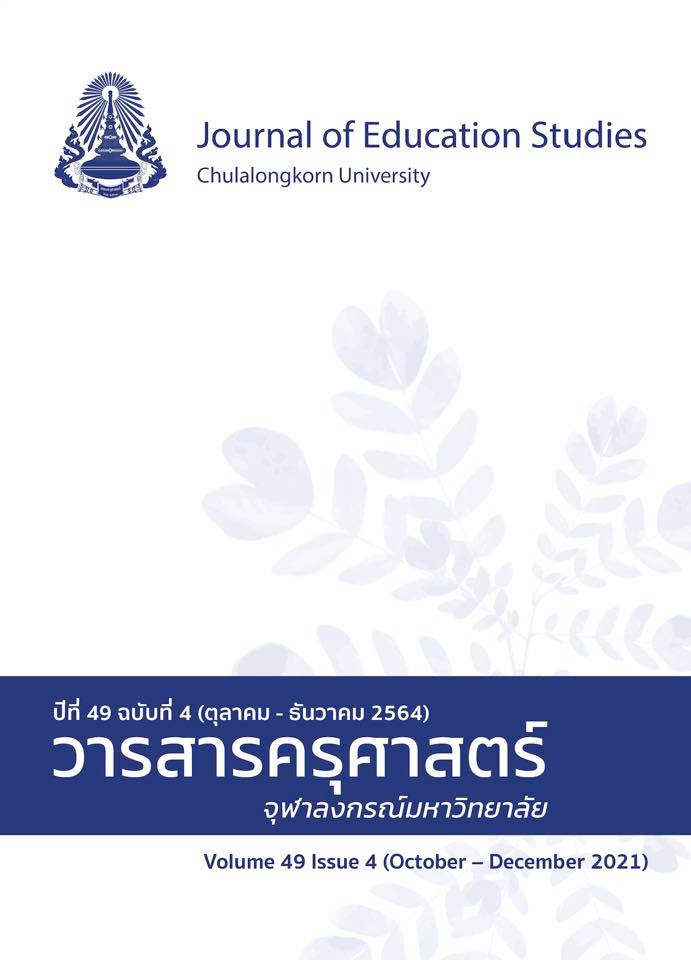Current and Desired Leadership Models for Directors of Cooperative Education Offices in Thai Universities
DOI:
https://doi.org/10.14456/educu.2021.63Keywords:
director of cooperative education office, leadership model, desired leadership modelAbstract
The objective of this research was to study current and desired leadership Models for directors of the cooperative education (Co-op) offices in Thai universities. Using a mixed method, the population of this research included 17 higher education institutes where there are Co-op offices. A semi-structured interview and a questionnaire were used to collect data. All information was analyzed by using content analysis and descriptive statistics which are frequency distribution, mean, standard deviation, and Priority Need Index (PNI). The 3 highest mean scores for the desired leadership models for directors of the Co-op offices in Thai universities were (1) facilitator or stimulator, (2) mentor, and (3) broker or mediator. The results from interviewing pointed out that, based on the frequency distribution, the current leadership models for directors of the Co-op offices in Thai universities were monitor and coordinator, whereas the desired ones were Broker or mediator, and innovator.
References
ภาษาไทย
ขวัญชัย พานิชการ และ พฤทธิ์ ศิริบรรณพิทักษ์. (2556). การพัฒนารูปแบบการบริหารที่เหมาะสมสำหรับสถาบันอาชีวศึกษา
วารสารครุศาสตร์, 41(3), 133-146.
สำนักงานเศรษฐกิจและอุตสาหกรรม. (2554). รายงานการศึกษา โครงการ "การศึกษาแนวทางการพัฒนาเศรษฐกิจ
อุตสาหกรรมในจังหวัดเลยในบริบทการเชื่อมโยงทางเศรษฐกิจกับประเทศเพื่อนบ้าน". http://www.oie.go.th/
academic/รายงานการศึกษา
สำนักงานเลขาธิการสภาการศึกษาและสถาบันวิจัยเพื่อการพัฒนาประเทศไทย (TDRI). (2541). การศึกษาความต้องการ
กำลังคนเพื่อวางแผนการผลิตและพัฒนากำลังคนของประเทศ. http://tdri.or.th/research/a75/
ภาษาอังกฤษ
Cameron, K. S., & Quinn, R. E. (2006). Diagnosing and changing organizational culture based on the
competing values framework (Revised edition). John Wiley & Sons, Inc.
Hart,. S. L., & Quinn, R. E. (1993). Roles executives play: CEOs behavioral complexity and firm performance.
Human Relations, 46(5), 543
Lewis, M. W., Smith, W. K., & Tushman, M. L. (2016). Both/and leadership, Harvard Business Review, 2016
(May), 62–70.
Northeastern University. (2011). Department of cooperative education. http://www.coop.neu.edu/[2011,
February 9].
Morgan, J. (2015). Leadership 5 types of organization structures. Forbes. http://www.forbes.com/sites/
jacobmorgan/2015/07/06/the-5-types-of-organizational-structures-part-1-thehierarchy/#
1b0bde3853f0
Tanaka, Y. (2015). The economics of cooperative education. Routledge.
Downloads
Published
How to Cite
Issue
Section
License

This work is licensed under a Creative Commons Attribution-NonCommercial-NoDerivatives 4.0 International License.




